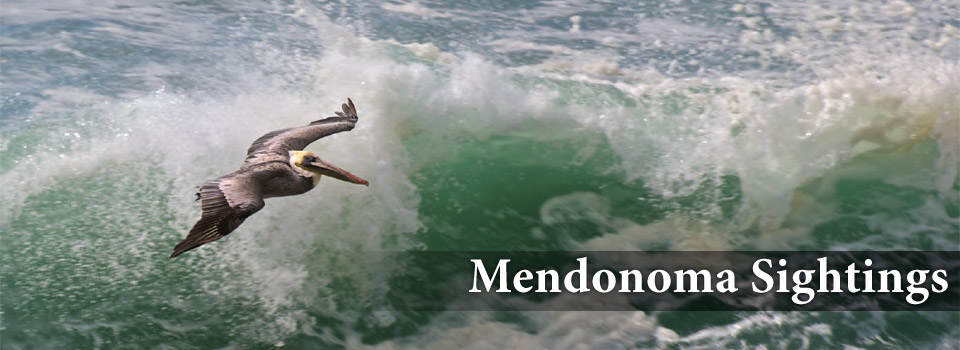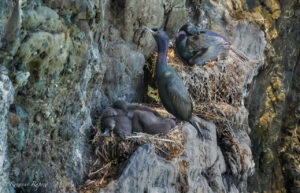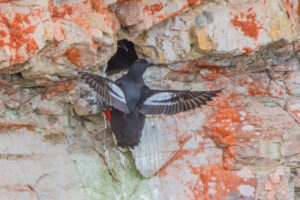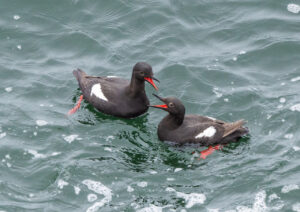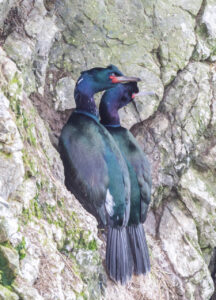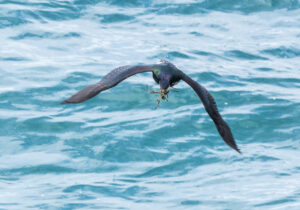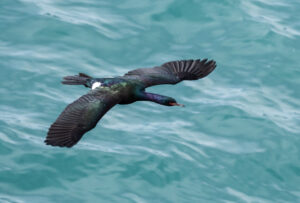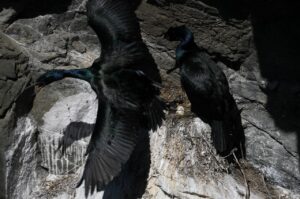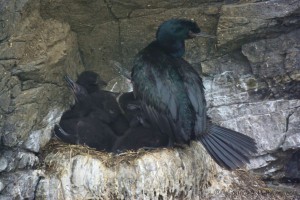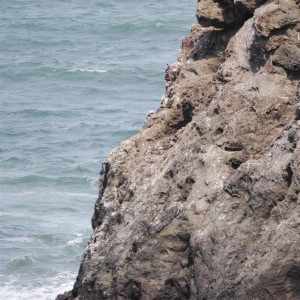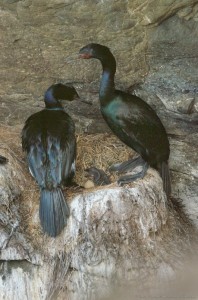Pelagic Cormorants attache their nests to bluff faces, using their own guano as glue. Rozanne Rapozo recently photographed several nests.
Michael Reinhart found Pigeon Guillemots. They use openings in rocks for their hidden nests, much safer than the Pelagic Cormorant nests. This is a rather rare photo of a chick being fed.
Here are two Pigeon Guillemots on the water. It looks like they are talking to each other. Note the orange-red mouth!
Pelagic Cormorants are mostly silent, but Pigeon Guillemots have a whistling call that you can hear on the Cornell Lab of Ornithology at this link: https://www.allaboutbirds.org/guide/Pigeon_Guillemot/sounds
Thanks to Rozanne and Michael for allowing me to share their photos with you here.
It was very foggy this morning, with the sun finally breaking through mid-afternoon, a lovely cool day on the Mendonoma Coast!
